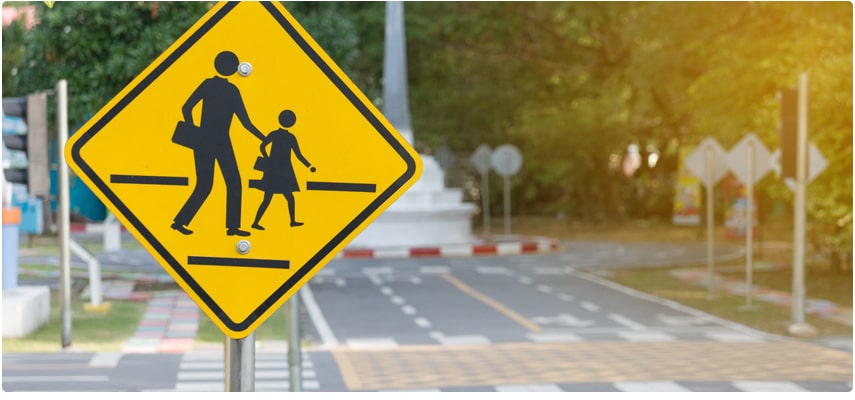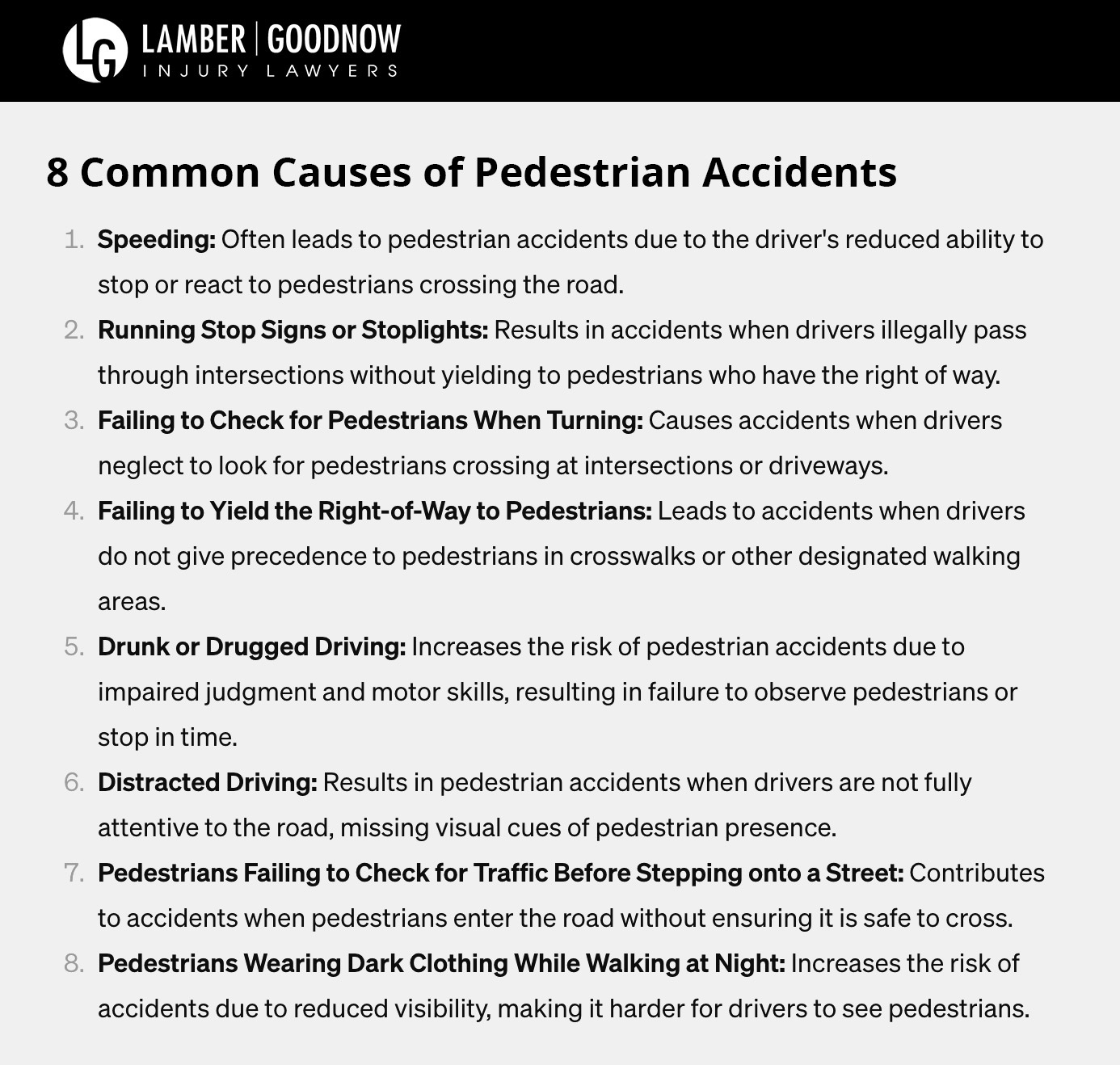Pedestrian Accident Attorney in Phoenix, AZ
EXPERIENCE. STRAIGHT TALK. JUSTICE.
99% Success Rate
550+ 5-Star Reviews
$0 Fee Unless We Win
Meet Marc Lamber
99%!
Won or Settled*99% Success Rate.

Over 550 5 Star Reviews
0$
No Fee PromiseNo fee unless you get paid.
We are the legal experts the media calls


Lamber Goodnow Injury Lawyers
Phoenix Office
Pedestrian Accident Lawyer Phoenix
Given the tragic consequences that can occur when a vehicle strikes a person, drivers have an obligation to exercise care when driving under the law.

Straight Talk From Marc Lamber
“Protecting pedestrians is a fundamental part of what we do, rooted in commitment to safety and accountability. In Arizona, where crosswalks and sidewalks are arenas of shared responsibility, we stand firm in our dedication to uphold the rights of those on foot. Our experience as the state’s leading personal injury law firm equips us to tackle negligence with precision, ensuring that every pedestrian’s story is heard and justice served. It’s about clear, direct action for safer streets and rightful compensation for the injured.”
“Never Saw You” is no excuse in our book.
Some of the most serious types of motor vehicle collisions that occur in Phoenix involve pedestrians. When people are walking on sidewalks, in crosswalks, or are otherwise sharing the roads with cars, they have a much higher risk of sustaining catastrophic injuries or being killed in traffic accidents. Pedestrians do not have anything to protect against the physical forces that are released in car crashes and instead absorb the forces of a collision with their bodies. This increases the chance that a pedestrian’s injuries in a crash will be catastrophic or fatal.
Because of the risk of serious injuries in pedestrian accidents, the Arizona Legislature has passed numerous laws to protect people while walking. Despite these laws, some motorists make critical errors and cause serious pedestrian accidents. Pedestrian accident victims have a right to file lawsuits against the motorists who negligently caused their accidents and injuries. By filing a pedestrian accident claim, a victim might hold the negligent party accountable while recovering fair compensation for their losses.
The pedestrian accident lawyers Phoenix at the Lamber Goodnow Injury Lawyers share a strong belief that people who are injured because of the negligence of others deserve to be fully compensated for their losses. When we accept representation of a client’s case, we start working immediately to investigate what happened, gather and preserve evidence, interview witnesses, and do anything we can to build a strong legal case for our client. Our successful record for our clients has allowed us to build a reputation as a formidable team of plaintiff’s attorneys. In many cases, insurance companies agree to extend fair settlement offers to our clients rather than risk losing to us at trial.
Required Elements of a Pedestrian Accident Lawsuit
To successfully pursue a pedestrian accident lawsuit, the following critical elements must be proven:
Negligence
The plaintiff must demonstrate that the pedestrian accident was the result of the defendant’s negligent actions. This includes failure to observe traffic signals, speeding, distracted driving, or any other violation of traffic laws that put pedestrians at risk.
Breach of Duty
There’s an established duty of care that drivers owe to pedestrians. This duty encompasses driving attentively, yielding to pedestrians at crosswalks, and obeying traffic laws designed to protect those on foot. The defendant must have violated this duty to be held accountable.
Causation
It is essential for the plaintiff to link the defendant’s breach of duty directly to the accident. This means proving that the pedestrian’s injuries were a direct result of the defendant’s negligence, not due to unrelated factors.
Damages
The injuries suffered by the pedestrian must result in verifiable damages. This could include medical bills, rehabilitation costs, lost earnings, pain and suffering, and any other losses attributable to the accident.
Additionally, the lawsuit must be filed by someone with the legal standing to do so — either the injured pedestrian themselves or a legal representative if the pedestrian is incapacitated or has passed away due to their injuries. Establishing these elements with clear evidence is crucial for a successful pedestrian accident claim.

Types of Pedestrian Accidents We Handle
Lamber Goodnow Injury Lawyers in Phoenix handles all of the following types of pedestrian accident claims for our clients:
- Pedestrian accidents caused by distracted drivers
- Pedestrian collisions caused by drunk or drugged drivers
- Pedestrian accidents occurring in crosswalks
- Pedestrian collisions while crossing roads at unmarked intersections
- Pedestrian accidents caused by a motorist’s failure to yield the right-of-way
- Pedestrians struck by motorists who run stoplights or stop signs
- Pedestrians struck in parking lots
- Many others
A pedestrian accident attorney Phoenix at the Lamber Goodnow Injury Lawyers understands that each case is unique. For this reason, we tailor how we approach each case based on the needs and circumstances of our clients. We partner with each client to build the strongest case possible and help them recover the compensation they deserve.

Pedestrian Accident Statistics
Data from 2021 compiled by the Governors Highway Safety Association (GHSA) demonstrates an alarming upward trend in pedestrian fatalities. According to the GHSA, the number of pedestrian deaths increased by 11.5% from 2020 to 2021, and a total of 7,485 pedestrians were killed in traffic accidents in 2021 nationwide. In Arizona, the GHSA reports that 235 pedestrians were killed in 2021, representing a 6.8% increase since 2019. In Phoenix, 97 pedestrians were killed in 2021.
The pedestrian accident statistics in Phoenix, Arizona, and across the U.S. are troubling and demonstrate the dangers of these types of collisions. If you were seriously injured in a pedestrian accident or lost a close family member when they were struck by a car, you should reach out to a pedestrian accident attorney Phoenix at the Lamber Goodnow Injury Lawyers to learn about the legal remedies that might be available.
Common Causes of Pedestrian Accidents
Both pedestrians and motorists need to understand the common causes of pedestrian accidents to reduce their risk of collisions. The following are some of the most common causes of pedestrian accidents in Phoenix:
- Speeding
- Running stop signs or stoplights
- Failing to check for pedestrians when turning
- Failing to yield the right-of-way to pedestrians
- Drunk or drugged driving
- Distracted driving
- Pedestrians failing to check for traffic before stepping onto a street
- Pedestrians wearing dark clothing while walking at night
Arizona has enacted several laws designed to protect pedestrians and prevent accidents.

Locations
Lamber Goodnow Injury Lawyers
Phoenix, Arizona
602-ARIZONA (602-274-9662)
2394 E Camelback Rd #600
Phoenix, AZ 85016
Lamber Goodnow Injury Lawyers
Denver, Colorado
303-800-8888
1330 Logan St Suite B2,
Denver, CO 80203
Lamber Goodnow Injury Lawyers
Tucson, Arizona
520-477-7777
4023 E. Grant Rd Suite 101,
Tucson AZ 85712.

